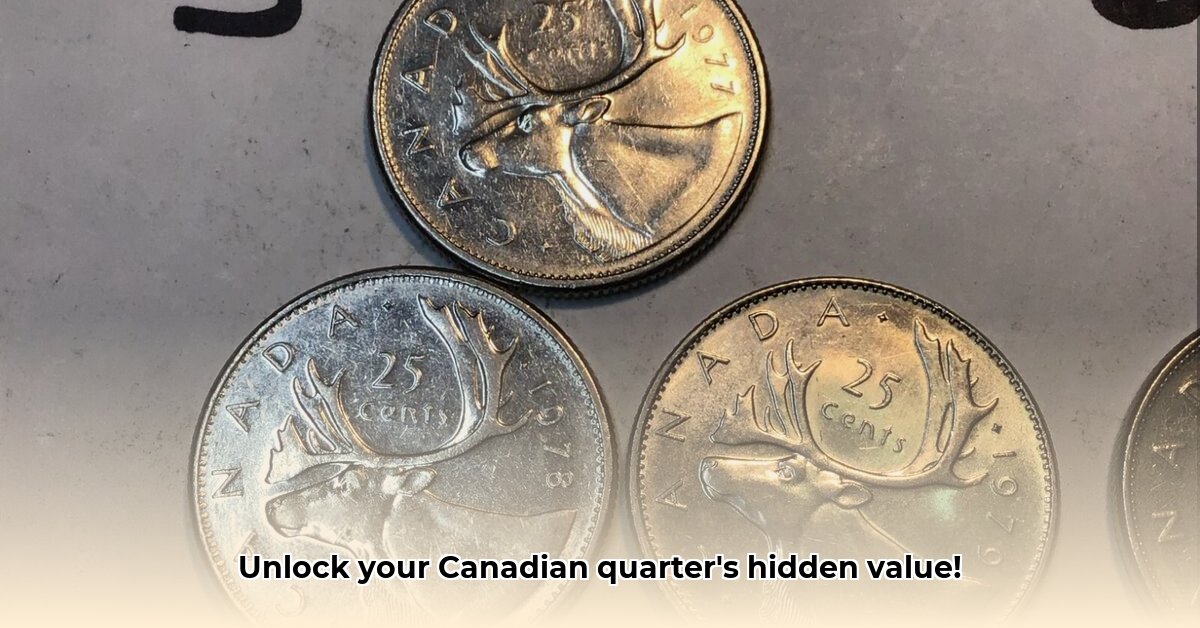
The 1979 Canadian quarter, while not exceptionally rare in terms of mintage, holds intriguing potential value for collectors. Its worth, however, is inextricably linked to its condition. This guide provides a comprehensive approach to assessing and understanding the value of your 1979 Canadian quarter.
Coin Specifications and Design
The 1979 Canadian quarter, designed by Emanuel Hahn and Arnold Machin, features Queen Elizabeth II on the obverse and a caribou on the reverse. Minted from nickel, it weighs 5.07 grams and has a diameter of 23.88 mm. Its reeded edge (the ridged outer rim) is a distinguishing characteristic. While a substantial mintage of 131,042,905 coins ensured widespread circulation, its current market value depends entirely on preservation.
Grading and Condition: The Key to Value
Understanding coin grading is paramount to determining a 1979 Canadian quarter's value. Professional grading services like PCGS (Professional Coin Grading Service) and NGC (Numismatic Guaranty Corporation) utilize standardized scales to assess a coin's condition. These scales evaluate wear, scratches, and toning (color changes). The higher the grade, the greater the value.
Here's a simplified grading scale, remembering that nuances within each grade exist:
| Grade | Description | Value Range (USD) |
|---|---|---|
| MS 65 | Practically flawless; minimal visible wear | $20 - $50+ (depending on other factors) |
| MS 60 | Minor imperfections; mostly uncirculated | $10 - $20+ |
| AU 58 | Lightly circulated; noticeable wear | $5 - $10+ |
| AU 50 | Moderately circulated; more pronounced wear | $2 - $5+ |
| G 4 | Heavily circulated; significant wear and damage | Under $2 (often face value) |
(Note: Value ranges are estimations and subject to market fluctuations.)
A Mint State (MS) 65 coin is near-perfect, while About Uncirculated (AU) coins show slight wear. Heavily circulated coins (Good or G) show substantial wear and command the lowest values.
Key Features Affecting Value: Subtleties that Matter
Even within a grade, subtle variations significantly impact value. Consider these factors:
- Wear: Even minor wear reduces value compared to an uncirculated coin.
- Scratches: Deep scratches decrease value more than superficial ones.
- Toning: Uniform, subtle toning can enhance value, but harsh toning signals potential issues.
These seemingly minor flaws can significantly affect a coin's final price.
Determining Value: A Step-by-Step Guide
- Assess Condition: Examine your coin for wear, scratches, and toning. Clear photographs aid objective assessment.
- Professional Grading (Recommended): While self-grading is possible, PCGS or NGC certification provides the most accurate and readily accepted valuation.
- Research Pricing: Consult reputable online resources, auction records from Heritage Auctions or Stack's Bowers Galleries, and coin dealer websites. Multiple sources are crucial for accurate comparison.
- Comparative Analysis: Compare your coin's grade and condition to recently sold examples. This establishes a current market value. Consider factors such as specific features and any unique characteristics.
Where to Buy, Sell, and Learn More
When buying or selling, prioritize reputable numismatists. Online marketplaces require careful vetting with particular attention paid to seller reviews. Continue your education through numismatic publications and websites.
Conclusion: Your 1979 Canadian Quarter's Potential
The value of a 1979 Canadian quarter is determined by its condition and market forces. By thoroughly assessing its condition, conducting research to determine its grade, and comparing it to similar coins on the market, you can gain an accurate understanding of its true worth. Proper storage is also crucial to maintaining value. Happy collecting!